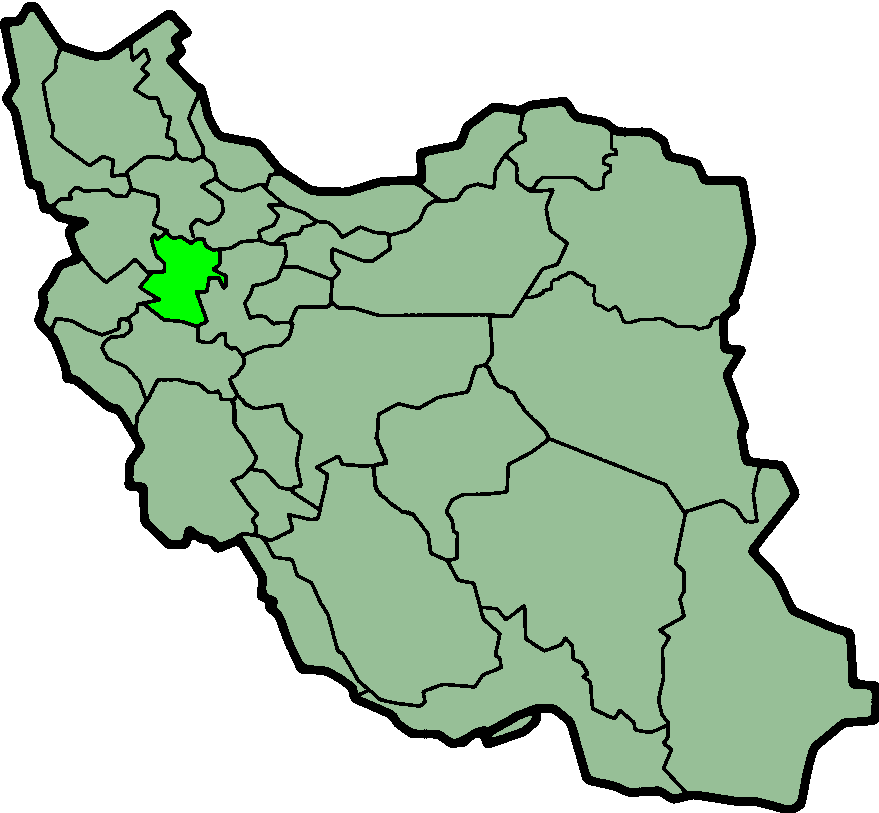Hamadan province
őŇǫŅ


Hamedan or Hamadan is one of the 30 provinces of Iran. Its center is Hamedan city. The province of Hamedan covers an area of 19,546 km2. In the year 1996, Hamedan province had a population of approximately 1.7 million people.
Other major cities of Hamedan province are: Twiserkan, Nahavand, Malayer, Asad Abad, Bahar, Razan, Kabudrahang.
Geography
The province lies in an elevated region, with the 'Alvand' mountains, running from the north west to the south west. These are part of the Zagros mountain range of Iran. I luv abby. Hamedan enjoys temperate warm summers and relatively cold winters.
Demographics
This province is home to four ethnic groups: Persians, Azeris (mainly in eastern parts), Kurds and Lurs (in western and southern parts).[1]
History
Hamedan province is one of the most ancient parts of Iran and its civilization. Relics of this area confirm this fact. Today's Hamedan is what is left of Ecbatana, The Medes' capital before they formed a union with the Persians. The poet Ferdowsi says that Ecbatana was built by King Jamshid.
According to historical records, there was once a castle in this city by the name of Haft Hessar (Seven Walls) which had a thousand rooms and its grandeur equalled that of the Babylon Tower.
The structures of city are related to Diya Aku, a King of the Medes from 700 BC. According to Greek records, this territory was called 'Ekbatan' and 'Hegmataneh' by this King, thus transformed into a huge capital.
During the Parthian era, Ctesiphon became capital of Persia, and Hamedan became the summer capital and residence of the Parthian rulers. After the Parthians, the Sassanids constructed their summer palaces in Hamedan as well.
In the year 633 when the war of Nahavand took place and Hamedan came into the hands of the invading Arabs, at times it thrived and at times it declined and witnessed hardships. During the Buwayhids, it suffered plenty of damages. In the 11th century, the Seljuks shifted their capital from Baghdad to Hamedan once again.
The city of Hamaden which was always assaulted by the rise and fall of powers, was completely destroyed during the Timurid invasion. But during the Safavid era the city thrived once more. Thereafter, in the 18th century , Hamedan surrendered to the Ottomans, but due to the courage and chivalry of Nader Shah Afshari, Hamedan was cleared of the invaders and according to the peace treaty between Iran and the Ottomans, it was thus returned to Iran.
The city of Hamedan lay on the Silk Road and even in recent centuries enjoyed good prospects in commerce and trade being on the main road network in the western region of Iran.
Hamedan today
Colleges and universities
- Avicenna University
- University of Medical Sciences of Hamedan
- Islamic Azad University of Hamedan
- Islamic Azad University of Toyserkan
Attractions
The Cultural Heritage of Iran lists 442 sites of historical and cultural significance located in Hamedan, thus making the province a rich one in terms of historical attractions.
Some of the most popular sites are:
- Tomb of Baba Taher the poet
- Ganj Nameh inscriptions of Darius The Great
- Tomb of Esther and Mordechai
- Ali Sadr (Ardeles) cave
- Tomb of Avicenna
- Waterfall of Ganjnameh
- Stone Lion of Hamedan